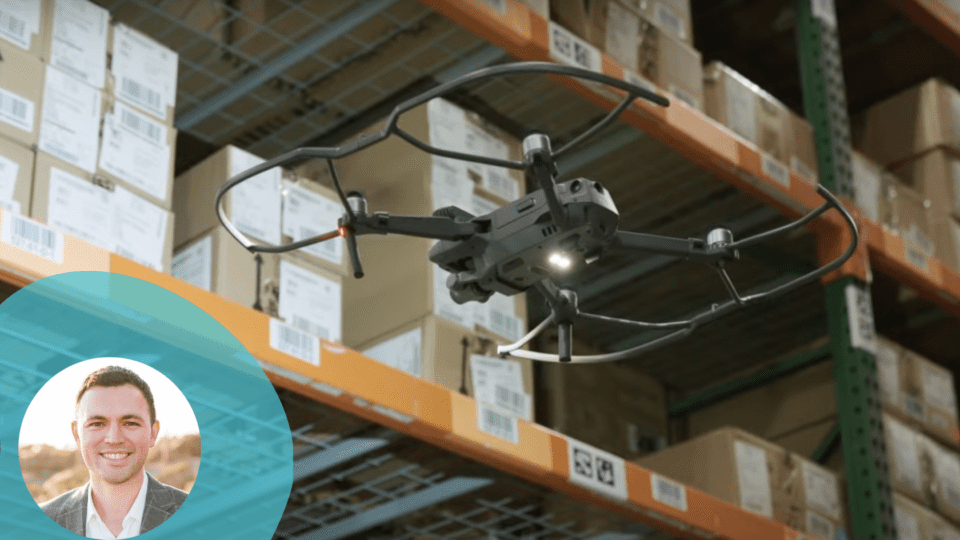There’s been a lot of talk recently about retailers reporting lower-than-expected earnings due to inventory shrinkage. What does this mean exactly? According to the Corporate Finance Institute, “Inventory shrinkage occurs when the number of products in stock are fewer than those recorded on the inventory list. The discrepancy may occur due to clerical errors, goods being damaged or lost, or theft from the point of purchase from a supplier to the point of sale.”
While the focus in the media has been on shoplifting, shrinkage in the warehouse has also been an issue. I’d like to focus on misplaced inventory in warehouses and discuss how you can combat shrinkage by evolving your logistics and storage practices. I think it’s important for us to open this dialogue about why lost inventory is such a modern issue, is likely to worsen— and what we can do about it.
Ecommerce and the shift to omnichannel has been a catalyst. The U.S. Department of Commerce data shows ecommerce sales have been growing steadily for over a decade, with significant growth in the past three years. Distribution centers (DCs) now need to be able to provide supplies directly to stores but also shift to direct-to-consumer (DTC) for online purchases. The number of transactions and movements have gone up dramatically, because DCs are expected to manage both. This means retail distribution needs to operate as efficiently as possible, as teams are trying to do more with less resources. And if they’re doing this manually, with high employee turnover, the room for error is high.
I’ll use a case study to illustrate why warehouse inventory accuracy is so critical. Sneaker and streetwear marketplace Stadium Goods has inventory consigned to it. The company can have 50 units of the same footwear SKU, and each one can be owned by a different consignor with a different selling price. Additionally, these shoes can cost anywhere from $50 to $15,000 for a single pair. If Stadium Goods loses the inventory, it’s accountable and has to pay the marketplaces for that product. In total, it has 500,000 individual pairs of sneakers at its third-party logistics (3PL) partner, Barrett Distribution Centers.
Advertisement
To ensure accurate inventory, Stadium Goods and Barrett are using AI-powered autonomous drones for cycle counting. The drones photograph pallets (day or night); machine learning (ML) algorithms read bar codes and text and show warehouse management system (WMS) discrepancies in real time. The drones will even show inventory that looks damaged and empty pallet locations. Because the drones are programmed with software-only AI, they get smarter and more “curious” over time. This technology requires virtually no infrastructure changes and can be applied to any warehouse with racking.
Not only can this technology improve your inventory accuracy, but you can do more frequent cycle counts with less equipment. Remember how much you pay for automated lifts, plus insurance and maintenance? Cut that down by handing over inventory monitoring to drones. Companies across the US are reporting this process is up to 15 times faster than manual cycle counting with perfect recall and traceability.
With this technology, Stadium Goods saw its inventory accuracy increase to over 99%, reducing inventory shrink from 2% to a fraction of a percent. It also eliminated manual counts and physical inventory (PI), saving over $200,000.
Al Sambar, at NYC-based retail-focused venture firm XRC Ventures says “Inventory inaccuracy within retail logistics facilities is costly for split ships, missed ships and inventory write-offs. Drones are still new to the industry, and most retailers still run accuracy levels that are far too low, compared to the 99% they could see with drones.”
Steve Schweighofer, VP of Operations at Stadium Goods, says about this technology, “I was skeptical at first, but it’s been a game-changer.”
In my experience working with companies that are using drones to manage their inventory, one found over $1 million worth of lost inventory in one warehouse, one reduced full inventory collection time from 90 days to 2.5 days, and one doubled its sales in one year.
All this is to say that drone-powered warehouse inventory monitoring is worth considering as you plan for 2024 to avoid the shrinkage so many companies are unfortunately facing today. By leveraging new, proven technologies, you can save yourself and your company time, money and lost product.
As VP of Customer Success, Sean Mitchell oversees customer operations for Gather AI, which has customers that span third-party logistics, retail distribution, manufacturing, food and beverage and health and wellness. He has over 10 years of experience in supply chain and opto-electronic manufacturing, working in engineering, operations and sales. Prior to Gather AI, he was with Fabrinet and Anybots. Mitchell received a BS in Mechanical Engineering from Cornell University and resides in Redwood City, Calif.




